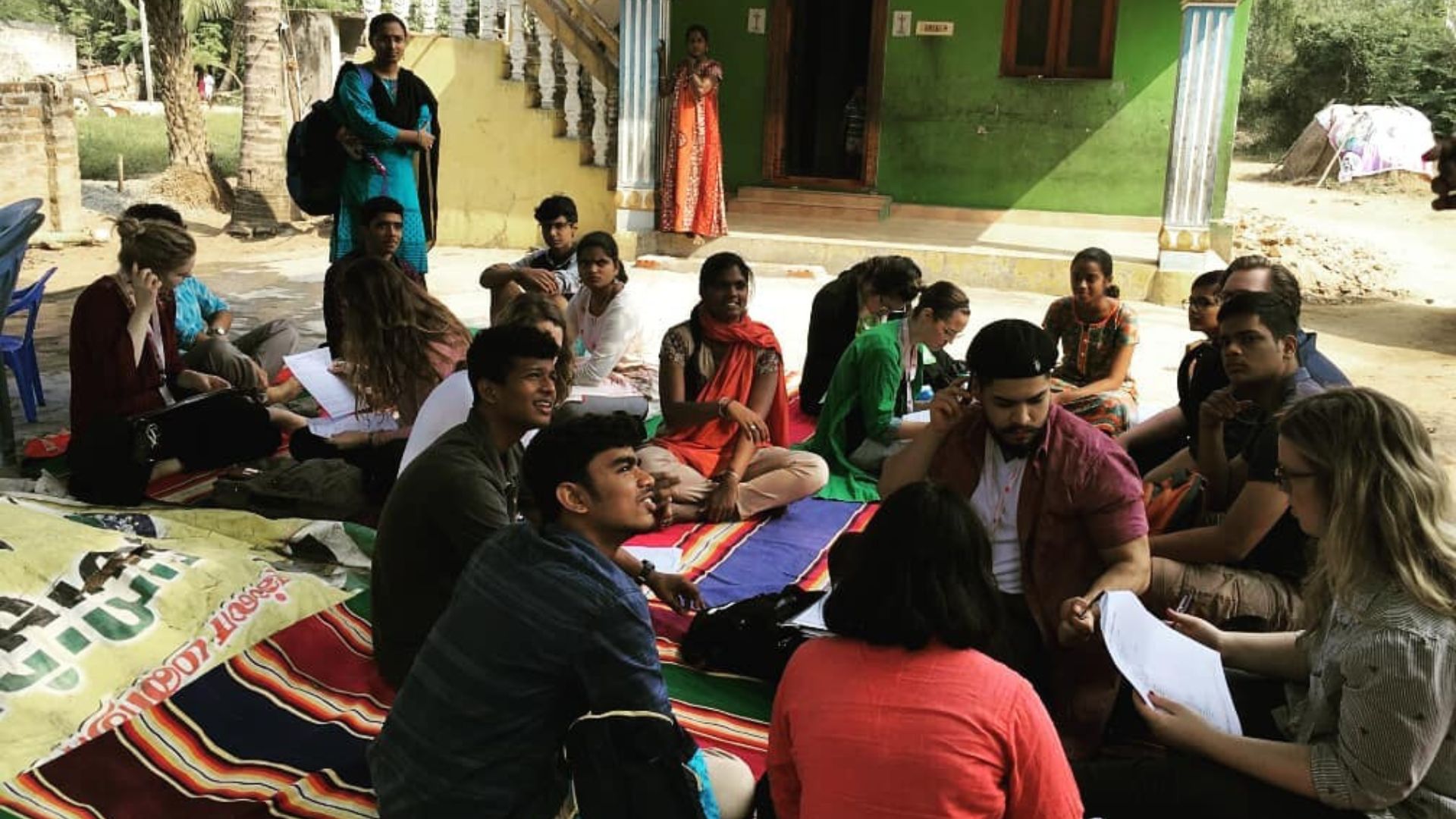U.S. universities are witnessing a growing interest in public health degrees, which prepare students for diverse professional and research careers.
July 2020

Students and faculty of the Colorado School of Public Health traveled to India in 2018 to conduct a rapid needs assessment. Courtesy Colorado School of Public Health
As the general interest in public health increases, in the backdrop of the coronavirus pandemic, so does the interest in the study of the discipline.
“Many schools of public health that extended their application deadlines because of COVID-19 have, across the board, seen a 17 percent increase in applications this year compared to last year,” says Michelle Azurin, associate director of admissions and recruitment at University of California (UC) Berkeley School of Public Health. She expects this trend to continue for the upcoming cycle.
“I anticipate that we will see more students in the coming years seeking public health degrees,” says Chloe Bennion, student affairs and academic operations director at the Colorado School of Public Health (ColoradoSPH). “Epidemiology is certainly one area that may see growth, but I think we can also expect growth in other areas of public health: environmental and occupational health, health policy, biostatistics, mental health, global health, and community and behavioral health.”
Public health is a broad field and entails a combination of subjects. At UC Berkeley, for example, these disciplines include health policy and management, infectious diseases, public health nutrition, epidemiology and biostatistics, health and social behavior, and environmental health sciences.
The requirements to join a public health program at an undergraduate or graduate level vary from university to university and depend on the field of concentration. While some universities, like UC Berkeley, offer both undergraduate and graduate degrees, others like the University of Colorado focus only on graduate degrees.
At UC Berkeley, successful applicants for the undergraduate major will have completed prerequisite courses in biological science, mathematics and social sciences. Graduate programs at the university vary in their requirements. While the “health policy and management MPH [Master of Public Health] program requires at least two years of post-grad work experience, other programs, like our epidemiology or biostatistics MPH, may accept students straight out of undergrad,” says Azurin.
Applicants to Colorado School of Public Health’s MPH program come from varied fields and experiences. “Some common fields that precede a public health degree may be in biological sciences, social sciences, communication, or math and statistics,” says Bennion. “Many of our students also come from health professions (i.e. nurses, doctors, physician assistants) seeking a broader view of population health.”
The admission requirements vary by program. “However, all of our programs require at least a bachelor’s degree,” says Bennion, “and international students need transcripts evaluated by WES [World Education Services], and should have TOEFL [Test of English as a Foreign Language] scores of 75 or above.”
The Colorado School of Public Health is a unique place to study as it consists of three schools that collaborate closely with each other: University of Colorado Anschutz Medical Campus in Aurora, Colorado State University in Fort Collins and the University of Northern Colorado in Greeley. “This collaboration gives our students access to a much wider range of faculty expertise and opportunities, and allows them to tailor their program to their educational needs and interests,” says Bennion. “Colorado State University is highly multidisciplinary, and in addition to ColoradoSPH courses, students at that campus have access to a huge range of public health-relevant courses taught by instructors with backgrounds in social work, psychology, ecology, anthropology, veterinary science, agricultural science and more.”
The University of Colorado Anschutz Medical Campus houses the majority of ColoradoSPH students and faculty. “Because this is a medical campus, there are myriad opportunities to engage in faculty research to supplement classroom learning,” says Bennion. “This research ranges from lab-based toxicology research to analysis of real health datasets to community-based participatory research with communities spanning the state.” In contrast, the programs at University of Northern Colorado are “very engaged in the local rural communities,” she adds, “so this is a great place for students seeking mentorship in community-engaged practice.”
At UC Berkeley, students enrolled in the MPH program gain practical experience during their studies. “Students are required to do a full-time summer internship in between their first and second year,” says Azurin. Students also get hands-on experience in the classroom. “I did the MPH program at Berkeley,” she says, “and I took project-based classes where we worked with external clients, using the information we learned in the classroom and practicing our new skills and knowledge on real projects.”
The programs of both universities offer a combination of academic excellence and hands-on experiences, which provides graduates a variety of opportunities for job placement. “Students get placed with public health organizations all over the world; some work at local public health departments or nonprofit organizations, while others travel internationally to do research,” says Azurin.
According to Bennion, many graduates of the ColoradoSPH have found work in nonprofit organizations, NGOs and the public sector. Other alumni work in hospitals and health care organizations, in sectors like pharmaceuticals, biotech, education and the military, and as consultants.
The high employment rate among graduates of public health programs and the current global health crisis have influenced a bigger applicant pool for public health degrees. “I think that the current crisis has not only made people more aware of the importance of having a strong and well-prepared public health workforce, but also its disproportionate impact on some communities has been a forceful reminder of existing and long-standing health inequities in our country and around the world,” says Bennion. She also predicts a higher demand for public health professionals in the private sector, as “many companies are having to re-think, or think for the first time about, their health standards and health promotion strategies for both their consumers and their employees.”
Natasa Milas is a freelance writer based in New York City.
COMMENTS